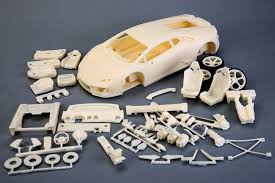Website design is a crucial factor influencing how users interact with a digital platform. A well-designed website not only captivates visitors but also ensures they remain engaged, facilitating conversions and enhancing overall user satisfaction. Below, we’ll explore how website design shapes user experience and why it’s a significant element in today’s digital ecosystem.
Why Website Design Matters for User Experience
Statistics show that 75% of users judge a company’s credibility based on its website design, making the visual layout and functionality of a website a priority. A poorly designed website can confuse users, driving them away, while an intuitive design ensures they find what they need seamlessly.
Website design impacts user experience in several ways:
• Navigation: Easy, logical navigation is key to keeping users engaged. Websites with intuitive navigation systems ensure that visitors can quickly locate the information they’re looking for, reducing frustration.
•
• Loading Speed: 53% of users will abandon a site if it takes longer than three seconds to load. Good design includes optimizing website performance to meet users’ expectations.
•
• Mobile Responsiveness: With mobile devices generating more than 54% of global website traffic, responsive design is no longer optional. Websites must adjust and perform equally well across all devices.
•
Key Elements of User-Friendly Website Design
Visual Hierarchy and Layout
Eye-tracking studies reveal that website visitors typically follow an F-shaped reading pattern. A good design strategically places the most important content where users’ eyes are naturally drawn first. Using contrasting colors, clear headings, and appropriate font sizes ensures readability and attention retention.
Color Psychology
Colors evoke emotions and influence user behavior. For example, blue is often linked with trust, while orange encourages action. Thoughtful use of color within website design can guide users toward making decisions, such as signing up for a service or making a purchase.
Call-to-Action (CTA) Placement
Well-placed and visually prominent CTAs can drive engagement and conversions. Whether it’s a “Buy Now” button or “Learn More” link, strategic positioning ensures users can take immediate action.
The Impact of Website Design Trends
Trends such as dark mode, micro-interactions, and minimalist designs are transforming user experience (UX). These elements not only make websites visually appealing but also enhance accessibility and usability.
Investing in high-quality website design is not just about aesthetics; it’s about creating an experience that keeps users coming back. Whether it’s through improved navigation, faster loading speed, or mobile compatibility, great design ensures user satisfaction and loyalty.



